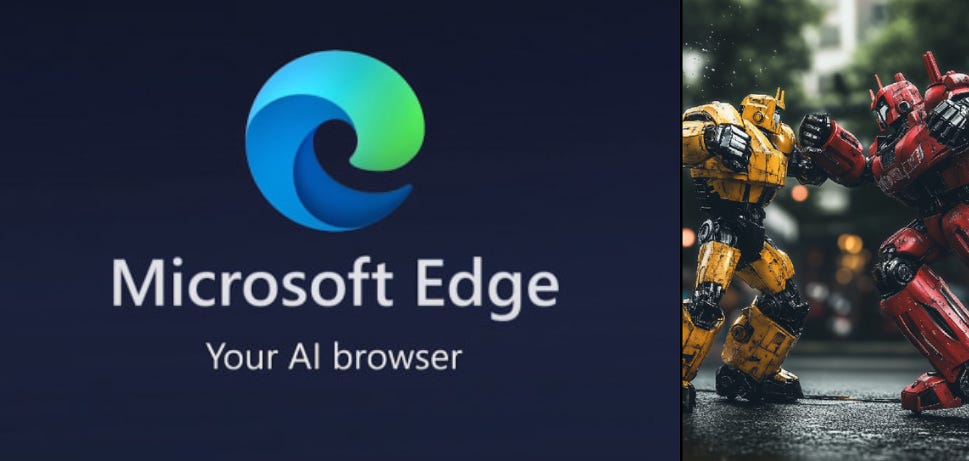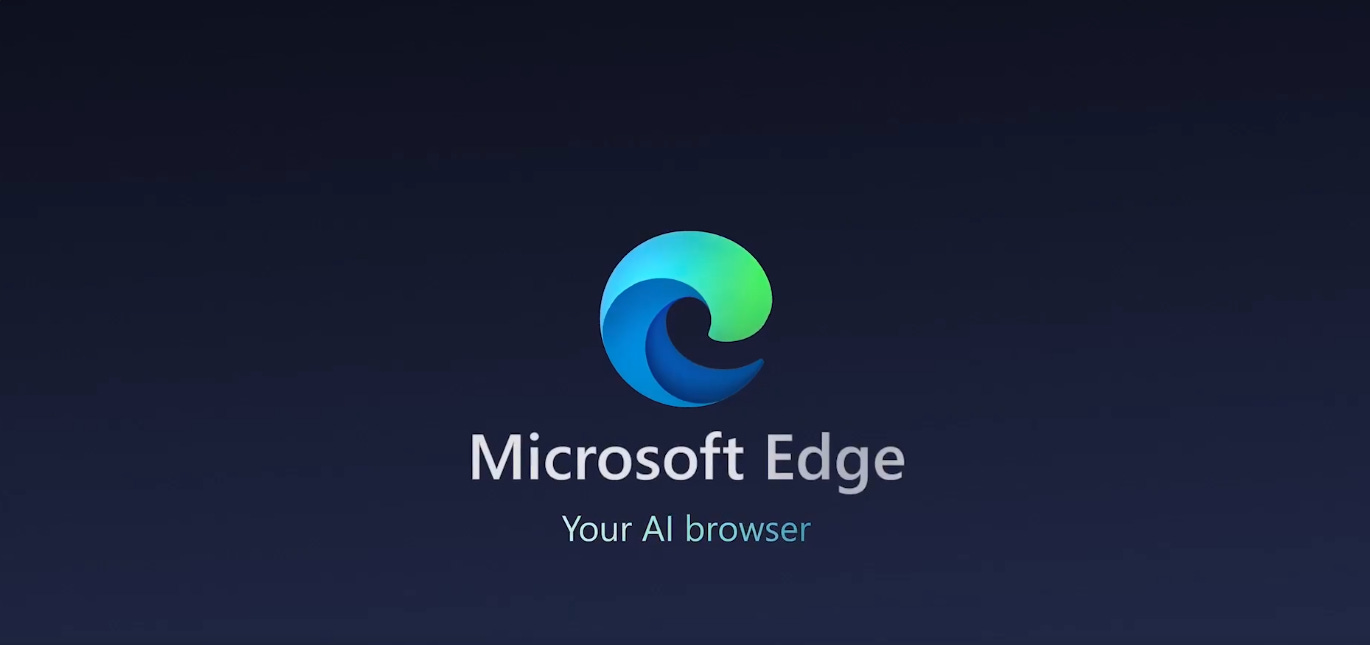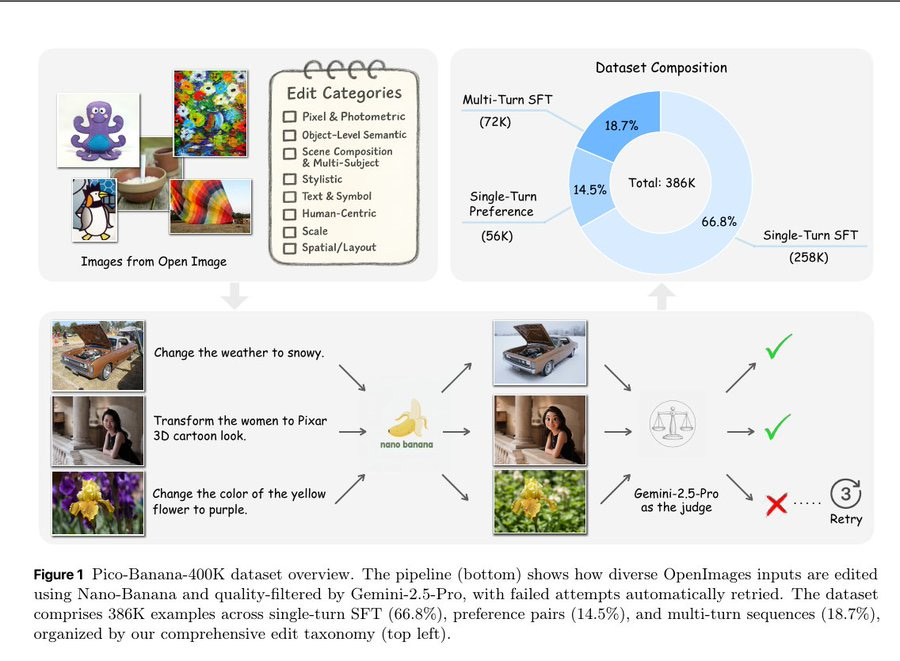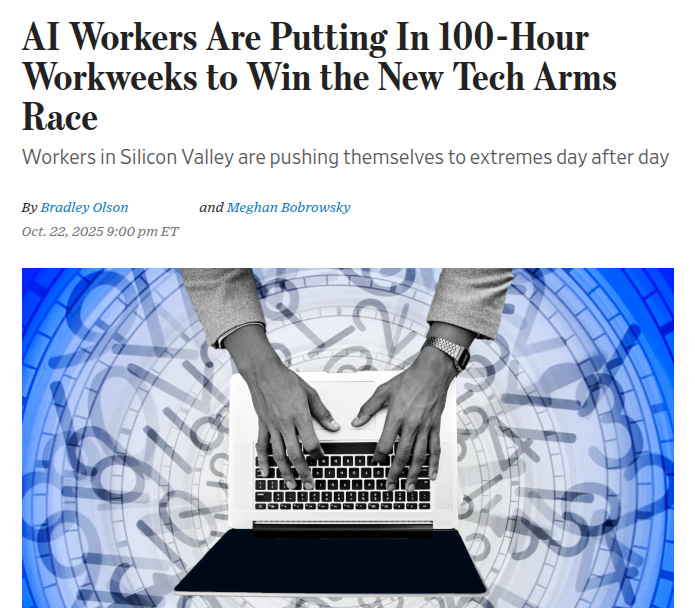🌐 Two days following OpenAI’s Atlas launch, Microsoft revealed a browser with almost the same AI features.
Microsoft bring AI in Edge, OpenAI buys a Mac automation startup, Anthropic locks a TPU mega-deal, Apple drops a model, AI wipes out junior tech jobs and Netflix going “all in” on AI
Read time: 11 min
📚 Browse past editions here.
( I publish this newletter daily. Noise-free, actionable, applied-AI developments only).
⚡In today’s Edition (24-Oct-2025):
🌐 Two days following OpenAI’s Atlas launch, Microsoft revealed a browser with almost the same AI features.
💼 Freelance digital roles and junior developer spots are taking a heavy blow from AI.
🎨 Apple just dropped Pico-Banana-400K.
📢 Anthropic just locked in a new deal with Google Cloud, giving it access to as many as 1 million TPUs plus other cloud services.
⏱️Silicon Valley’s core AI teams are pushing 80 to 100 hours a week to ship models and features faster than rivals.
💻 OpenAI acquires Mac automation startup Sky
📺 Netflix is going “all in” on AI, planning to use it across everything from how it recommends shows to how it creates and markets them
🌐 Two days following OpenAI’s Atlas launch, Microsoft revealed a browser with almost the same AI features.
Microsoft is joining the AI browser wave with the official launch of a new “Copilot Mode” in Edge. The option, first announced in July, turns Copilot into your portal to the web, with each new tab opening a chat window where you can either ask a question, conduct a search, or enter a URL.
Its an AI layer that can reason across tabs, take actions, and resume projects with opt in history context for richer answers.
With Actions, chat or voice can open pages, jump to the info on a site, or handle multi step chores like unsubscribing from newsletters and booking restaurants, with a free limited preview in the U.S. only as Microsoft rolls it out. With Journeys, Edge groups past browsing into topics and brings a user back where they left off with suggested next steps, also free limited preview in the U.S. only.
Turning on Page Context lets Copilot use browsing history to tailor replies, and it can be switched off any time in Settings. Control is explicit, Copilot Mode is a toggle with clear visual cues when it is acting or listening, and data is governed by the Microsoft Privacy Statement with optional personalization.
The Scareware blocker uses on device AI to detect fake full screen pop up scams and automatically stops them. The password manager keeps all your passwords safe, checks them for leaks or hacks 24/7, and alerts you if anything looks compromised.
Availability spans all Copilot markets on Windows and Mac with mobile coming, while Actions and Journeys remain limited previews in the U.S. with access expanding over time as Microsoft validates the features. This turns the browser from passive clicks into assistant style help that cuts time on messy workflows like planning, research, and bookings. Browsers usually have a similar look, but with the heated AI competition and tension between the two firms, getting both browsers within the same week feels pretty meaningful.
💼 Freelance digital roles and junior developer spots are taking a heavy blow from AI.
One Stanford analysis estimates about 20% lower employment for young developers versus late 2022, and other studies find slower junior hiring at firms adopting generative AI even as the broader tech correction also pushes hiring down.
Recent statistics support this view. The unemployment rate for recent US graduates in computer engineering stands at 7.5%, with computer science grads sitting at 6.1%, and information systems and management at 5.6%, according to projections from the US Federal Reserve Bank of New York.
Those percentages are higher than the overall US unemployment rate of 4.3% and significantly elevated compared to recent grads in nursing (1.4%), elementary education (1.8%), civil engineering (1%), and even art history (3%).
At the same time, a recent Resume.org survey of 1,000 US business leaders found that six in 10 companies are likely to lay off employees in 2026, with four in 10 planning to replace workers with AI by then. With AI coding assistants already near universally used, programmer jobs may be among the first on the chopping block.
🎨 Apple just dropped Pico-Banana-400K.
Each edit is produced by Nano-Banana then scored by Gemini-2.5-Pro with weighted checks, 40% instruction compliance, 25% seamlessness, 20% preservation balance, 15% technical quality, passing only if the score is about 0.7 or higher. The release includes 258K single-turn SFT pairs, 56K success-vs-failure preference pairs for methods like Direct Preference Optimization, and 72K multi-turn sessions, totaling 386K filtered examples with both long and short instructions.
Edits span 8 categories and 35 operations across pixel or color changes, object semantics, scene composition, styles, text or symbols, human edits, scale, and spatial layout, and low-quality operations were removed up front. Multi-turn chains are built by sampling 100K single-turn cases and adding 1 to 4 more operations to create 2 to 5 step sequences with context-aware follow-ups that refer to earlier edits.
Global and style edits succeed most, for example 0.9340 strong style transfer, 0.9068 film grain, 0.8875 modern↔historical restyle, while fine spatial control is hardest, for example 0.5923 relocate object, 0.5759 change font or style, 0.6634 outpainting. Images come from OpenImages, negative attempts are kept as counterexamples for preference learning, metadata is standardized, and the reported build cost is $100,000.
This image shows how the Pico-Banana-400K dataset builds preference triplets for model training.
📢 Anthropic just locked in a new deal with Google Cloud, giving it access to as many as 1 million TPUs plus other cloud services.
The agreement is said to be worth tens of billions of dollars.
Bringing >1 GW of AI compute online in 2026. This is meant to feed Claude’s rapid scale while keeping Anthropic’s multi-cloud approach intact.
The commitment centers on Google’s custom TPUs, with Google saying Anthropic is seeing strong price performance and efficiency on this hardware. Google’s stack now includes Ironwood, the 7th-gen TPU built for high-throughput inference, which helps lower serving cost per token for production traffic.
Anthropic spreads work across Google TPUs, Amazon Trainium, and Nvidia GPUs so training, inference, and research can run where cost and latency fit best. Amazon remains deeply embedded via Project Rainier on Trainium 2 and has invested about $8B in Anthropic, while AWS is described as a primary cloud for Claude.
Note, Google has been an investor to Anthropic. Already has put roughly $3B into Anthropic including a new $1B in Jan-25, alongside an earlier stake which is about 14%.
On the demand side Anthropic says annualized revenue is near $7B and its products serve 300,000+ businesses, while Claude Code crossed >$500M run-rate within about 3 months of full launch. So overall, the near-term impact is more stable training queues and cheaper inference capacity for enterprise features, which together support faster rollout of larger Claude versions. The medium-term risk is operational complexity from juggling 3 hardware stacks, but the upside is lower vendor lock-in and better unit economics as each platform is tuned to its sweet spot.
⏱️ Silicon Valley’s core AI teams are pushing 80 to 100 hours a week to ship models and features faster than rivals.
Executives and researchers at Anthropic, Microsoft, Google, Meta, Apple, and OpenAI describe a race where breakthroughs land every few months and the bar keeps jumping. The center of gravity is a small set of model and product builders who carry the late nights while broader orgs keep normal hours.
Leaders frame this as a rare window, so top folks accept the load for impact, curiosity, and outsized equity. Some startups even write 80+ hour expectations into contracts, although many do not need to because the culture already pulls people in.
Teams now run rotating “captains” to watch model outputs and product gates 24x7, plus weekend food and support to keep builds moving. Microsoft highlights adoption speed, with 90% of Fortune 500 already using AI products, shrinking the gap from paper to product to about “the gap between Thursday and Friday.”
Researchers say training remains unpredictable, so plans flex around results that only become clear after training, evaluation, and real users. The vibe is “speedrun” science.
“The most-intense periods for many come while working on models or new products, when time working extends beyond the so-called “9-9-6” schedule. That stands for 9 a.m. to 9 p.m., six days a week. One startup executive jokingly referred to the schedule as “0-0-2,” meaning midnight to midnight, with a two-hour break on weekends.”
💻 OpenAI acquires Mac automation startup Sky
📎 OpenAI has been on a buying spree lately. OpenAI just acquired Software Applications Incorporated, the small company developing Sky — a Mac automation tool that hasn’t been released yet. The deal adds to OpenAI’s roster the team that first built Workflow, the app Apple bought in 2017 and rebranded as Shortcuts.
They just bought Sky for Mac, to plug screen aware actions into ChatGPT, with about 12 people joining and terms undisclosed.
Sky floats over the desktop, understands what is on the screen, and then triggers actions in local apps like Calendar, Messages, Notes, Safari, Finder, and Mail.
The founders are former Apple Shortcuts veterans who built Workflow that Apple later turned into Shortcuts, so the team already knows macOS automation deeply.
OpenAI says this is about moving from answers to doing the work.
Under the hood, this kind of assistant pairs a language model with a catalog of app actions, then uses Shortcuts and scripts to carry out tasks based on what it sees in the active window.
📺 Netflix is going “all in” on AI, planning to use it across everything from how it recommends shows to how it creates and markets them
Netflix has already been using machine learning for years to power recommendations and optimize its production workflows, but now it is moving into generative AI in a much deeper way.
CEO Ted Sarandos explained that AI won’t replace creativity but will instead help creators tell stories “better, faster, and in new ways.”
He emphasized that tools don’t make someone a great storyteller, but they can make the creative process smoother and more efficient.
Some of Netflix’s recent productions are already using AI massively. The film Happy Gilmore 2 used generative AI for de-aging characters, and the show Billionaires’ Bunker used it to design wardrobe and sets during pre-production. These are early examples of how AI can speed up or expand creative workflows without removing human direction.
This comes amid tension in Hollywood over AI’s growing role. In 2023, SAG-AFTRA, the main actors’ union, went on strike partly over fears of AI-generated performances and likeness cloning. That strike led to the first contracts that give actors specific AI protections. Netflix is trying to show that it’s using AI responsibly by sharing internal guidelines for AI use in production.
That’s a wrap for today, see you all tomorrow.










Hey, great read as always. You always cut through the noise so well. Its wild how fast Microsoft is pushing these integrations right after OpenAI’s Atlas. It really shows the intense competition and pace in the AI browser space. Makes you wonder what's next and who'll innovate faster.